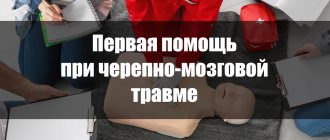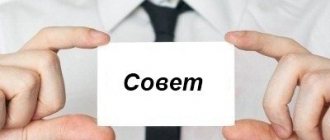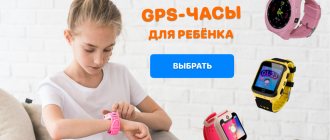08/21/2017
Small children not only grow quickly, but also develop by leaps and bounds. Babies discover new movements suddenly for themselves - and very unexpectedly for their parents. And most often this happens when the mother goes to the kitchen to stir the soup, leaving the baby alone on the sofa - because it seems to her that the child still does not know how to do anything and therefore will not crawl far. No matter how it is! Therefore, it is so important to provide a child, even a very small one, with a safe developmental space. This means that if you need to leave, the baby should be either in a crib with sides, or in a playpen, or on the floor, from where he will certainly not fall anywhere. And never leave your child alone on the sofa, on the changing table or in the stroller (the latter - if the baby is already learning to sit down and stand up, that is, after he is about 6 months old.
And yet, in almost every family, it happens that the parents, while caring for the baby, are distracted - the phone rang, the kettle boiled. They left the child on the sofa, and he fell! The first step is to figure out whether you should immediately call an ambulance or whether it’s too early to panic.
Signals when you need to call 03 immediately
- If a small child falls and “passes out” (it must be said that infants almost never lose consciousness even with a severe concussion)
- If you see significant damage (for example, there is an open wound on the head)
- If a child rolls his eyes, he has a seizure
- If he suddenly turns pale, cold sweat breaks out
- If he cries too much, an irritated note can be heard in his voice
- If regurgitation resembles a fountain (vomiting)
- If, some time after the fall, his temperature rises sharply, he becomes very lethargic and drowsy.
- If the fontanel has become convex
All these are signs of a concussion and possible serious consequences of a fall, so you must call an ambulance as quickly as possible, and carry out further treatment in a hospital under the strict supervision of doctors.
Loud crying, taken alone without the other symptoms listed above, is not a criterion that a child’s injury is serious. If the height from which the baby rolled is not higher than the sofa, and there is a carpet on the floor, there is a high chance that the baby was simply very scared - and expresses this by crying.
Efficiency. Professionalism. Mercy
The head of the educational department of the emergency medical service station, Oleg Nesterov, : “This year, emergency physicians hospitalized 13 children aged from 4 months to 12 years with suspected traumatic brain injury, dislocations, bruises, and fractures.
Babies under one year old fell from beds, sofas, changing tables, older children - from stools, tables, stairs, and entrance canopies.
If parents or others do not have time to react and pick up the child, then at this moment they should not close their eyes in fear, but watch which part of the body the child lands on: stomach, side, head, buttock, leg, arm. The next step is to pay attention to how the child behaves after a fall.
Even if the child lost consciousness for just a few seconds - stopped moving, stopped responding to spoken speech - this is a reason to seek medical help. At this moment, the child's eyes can be either open or closed. Let parents not be misled by the fact that after the incident the child continues to walk, run, play, and behave as usual.
The most dangerous, in terms of consequences, is falling on your head. May cause damage to the cervical spine and intracranial injury.
The very physiology of bone structure protects young children from serious injury. Until the age of three, they practically never have a fracture of the skull bones, because the bone structure is soft and elastic. The bone structure of the limbs is formed by islands: from the middle of the lower leg to the joint, that is, there are soft zones that do not break, and there are already bone tissues.
Externally, a fracture can be recognized by swelling, bruising, shortening of the limb, and incorrect position of the foot. At the same time, the absence of a bruise does not mean that there is no injury.
The child's head is large in comparison with the body, and the neck is weak, and subluxation of the atlas may occur, resulting in an unnatural tilt of the head - torticollis. This happens due to the fact that the first cervical vertebra pops out of the joint.
Remember: you cannot shake the child, move him abruptly, or pick him up. Approach the baby, bend over him and visually assess his condition. If there is a deformity of a limb, it is better not to move the child from the floor to the bed, but to place something soft and warm under him.
One of the parents should always remain close to the child, and the other should call an ambulance. Frightened by the absence of an adult, the baby will try to follow him, thereby causing additional injury to himself when moving.”
Source : own information
Photo: https://pixabay.com/ru/
How to get rid of swelling and hematoma
If your baby has a bump or bruise on his forehead, but quickly calms down after crying, the fall most likely did not cause serious harm to the baby. Therefore, the mother’s task is not to grab the phone to call an ambulance, and not to allow swelling to develop at the site of the impact. To do this, apply cold to the site of the “bump” or hematoma. Ice wrapped in a towel should be applied to the sore spot for 15-30 seconds and then removed, allowing the tissues to “rest.” You need to apply ice for 5-10 minutes, this will help reduce swelling and prevent a really impressive “bump” from developing. And of course, it is worth scheduling a visit to your doctor (pediatrician, neurologist, traumatologist). You don’t have to run to him right away tomorrow, but it’s worth coming for an examination in the next few days after the fall and reporting what happened.
Why is fever dangerous in children, and how to deal with it?
advises a medical pediatrician. Fever is the most common sign of the development of infectious and some other diseases in children.
Many things can cause a child to have a fever, from common childhood illnesses such as chicken pox and tonsillitis to reactions to vaccinations. An increase in body temperature is an innate protective mechanism by which the body stimulates the functioning of the protective factors of the immune system. Also, the increased temperature of the internal environment of the body itself can lead to inactivation or death of pathogens of many diseases. Remember that everyone's body temperature normally fluctuates 1-2 degrees throughout the day and may vary depending on age, activity level and other factors.
So rising temperatures are not a “problem.” This is an indicator that some kind of attack by microbes, viruses or other factors has occurred on the body, and the body reacts to it, gives a “response”. It is much worse when bacteria or viruses attack, but the temperature does not rise (i.e. there is no immune response, or it is insufficient).
Injury prevention
And even if, at the time of the fall, the child, as you think, escaped with only a slight fright, the baby should be shown to an osteopath. Because even very minor blows and bruises to the head can lead to a very small, invisible displacement of the skull bones. The baby’s skull bones are mobile, soft and pliable, they absorb shock well. This is why “flying” from the height of a sofa in the vast majority of cases does not lead to serious injuries in children, and this is confirmed by the observations of doctors. But in order to prevent further deformation, which can subsequently lead to microscopic displacement of the bones, it is important that an osteopathic doctor examine the child and help solve the problem. After all, this microtrauma in the future can lead to such serious consequences as deformation of the skull, poor posture, malocclusion, etc.
Children in the first year of life are actively exploring the world; they cannot avoid falls, bruises, and awkward movements. Preventive scheduled examinations by an osteopath are an opportunity to promptly recognize possible bone displacements, which inevitably occur as a child grows and develops, and, using gentle and very effective techniques, solve the problem in a timely manner, balance all body systems and help the baby become healthy and harmonious.
The article is located in the sections: OSTEOPATHY FOR ALL TRAUMATOLOGY AND ORTHOPEDICS
Consequences of head injuries in children
Head injuries can lead to quite serious consequences and impairments. It all depends on the complexity of the damage, which can be determined by the characteristic symptoms. The main types of complications that are diagnosed with bruises and head injuries are:
- Encephalitis;
- Epilepsy;
- Meningitis of a traumatic nature;
- Intracranial hematomas, leading to the appearance of tumors.
When a baby falls, he can hit not only his head, but his entire body, so damage to the spinal cord cannot be ruled out, which can result in problems with the musculoskeletal system.
To summarize, it is important to note that head injuries should be investigated without fail, otherwise it can lead to a number of different negative consequences that may appear several years later.
What is a fever?
The normal temperature for babies and children is around 36.4°C, but this may vary slightly from child to child.
- Low-grade fever is an increase in temperature from 36.7 to 38 degrees.
- Fever is a high temperature of 38 C or more.
The following symptoms appear when you have a fever:
- Your baby's forehead, back, or stomach feels hotter than usual.
- The surface of the skin becomes sweaty (moist) and sticky.
- The baby's cheeks and sometimes forehead turn red.
To measure temperature, it is best to use a safe digital thermometer without mercury filling.
Vomiting, diarrhea and fever in a child
Such a serious condition occurs due to intoxication, therefore, in the complex treatment of such conditions, drugs are prescribed that rid the body of toxins. Experts identify a number of diseases that are accompanied by exactly this set of symptoms. Among them there are food poisonings contaminated with various microorganisms.
In case of diarrhea, vomiting and fever in a child, it is recommended to take sorbents, consume large amounts of non-carbonated liquid and maintain an optimal temperature in the room, and frequently ventilate the room.
How to measure a child's temperature:
- The child's armpit should be clean and dry! If it is wet, the thermometer will show an inflated result!
- Move your child's arm to the side and place the thermometer in the upper armpit.
- Gently place your hand against your body and keep it pressed while taking the temperature.
- Leave the thermometer in place for as long as indicated in the instructions. Some digital thermometers beep when the temperature measurement is complete.
- Take out the thermometer. The display will show the baby's body temperature.
- If your child has just had a bath or has been wrapped tightly in a blanket, wait 10 minutes before taking their temperature.
- Professional infrared thermometers allow you to instantly measure body temperature. If there is a need to measure the temperature as accurately as possible, but there is no professional thermometer at hand, the most accurate results are obtained by measuring the temperature rectally.
What not to do when the temperature rises
- Do not undress your child or cool him or her with blows or rubs; fever is a natural and healthy response to infection. Hypothermia can lead to complications from the infection.
- Do not cover your baby with a warm blanket or wrap him up, as this may cause heat stroke. Just cover your baby with a sheet or light blanket.
- Do not give aspirin to children under 16 years of age. Absolutely never! This may be due to a rare but dangerous disease called Reye's syndrome.
- In children under one year of age, medications available in the form of rectal suppositories are recommended to reduce fever.
- Do not self-medicate. For young children, the dose of drugs and the frequency of their use should be calculated individually; the prescription can only be made by a doctor after diagnosis.
What to do if your child has a high temperature
The child must be kept at home and supervised. The temperature should drop within 3 or 4 days.
After vaccination, the temperature can remain normal for up to 48 hours.
What do we have to do:
- if the child is less than 6 months old, call a doctor immediately
- Give your baby plenty of fluids to drink (or continue breastfeeding)
- monitor signs of dehydration
- feed if the baby wants to eat
- Regularly monitor your child's condition at night
- give the child antipyretics prescribed by the doctor
Chronic hematoma in the elderly
Any bruising gradually disappears as the hematoma resolves. Why does an acute hematoma in the cranial cavity sometimes become chronic?
Alexander Borovsky:
— Chronic hematoma can be a consequence of traumatic brain injury, this is more common in older people. For example, a person slightly hit his head and forgot about this incident. After 10-14 days, the hematoma becomes chronic.
In older people, over the years, the volume of the brain becomes less than the intracranial volume, and many free cerebrospinal fluid spaces appear. After injury, minor bleeding does not lead to compression of the brain, so an asymptomatic course is possible. Over time, the blood breaks down into its components. Fibrin, which is contained in the blood, falls out, forming a capsule around the hematoma. The capsule works like a semi-permeable membrane, then red blood cells are destroyed and large protein molecules are released. Along an osmotic gradient, water from the surrounding tissues begins to flow into the hematoma cavity.
Another danger is an increase in the volume of the hematoma due to new hemorrhages from the newly formed vessels of the capsule. When it grows strongly (2-3 cm thick and can be more than 300 ml in volume), symptoms arise, for example, a headache appears, an arm or leg fails, speech and consciousness are impaired.
By the way, there are other factors that contribute to the formation of chronic hematomas: taking anticoagulants, vascular diseases, etc.
Troychatka from temperature for children
At elevated temperatures, doctors prescribe medications that relieve painful symptoms. Triad is considered one of the most effective remedies for the disease. This is a preparation of three natural herbs.
The troika for fever helps to cope with acute respiratory viral infections and influenza. This remedy can be used when a child has an elevated temperature due to an inflammatory process, seasonal cold or flu.
An example of such a miracle cure is Troychatka from Evalar. This is a specially developed herbal complex of extracts of three herbs with an antiparasitic effect. This drug does not cause allergies in the baby, as it consists of natural ingredients - extracts and flowers of tansy, wormwood and clove buds.
All of the above medical drugs can be purchased, as well as order the manufacture of drugs in the Gubernskiye Pharmacies network at a reasonable price. Place an order in our online store or call 2911-555.
On the other hand, the approach to each child should be individual.
If the child
- restless or feeling weak
- cannot tolerate muscle pain, headaches,
- there is nausea,
- no appetite,
then you must first use physical methods to improve the child’s well-being
:
- put to bed - this way the body will retain strength to fight infection and calm the child;
- drink fractionally with water or sweetened warm herbal tea with chamomile, linden, cranberry juice;
- provide access to fresh air;
- If there is an appetite, feed small portions of warm food (for example, soup, thin porridge with water, a light breakfast).
Also, according to the clinical course of the fever, apply additional cooling measures.
For “red” or “pink” fever
- the baby's body feels hot to the touch,
- skin is red or pink, moist,
- The child himself does not complain about his health, is active, and does not lose his appetite.
In this case, the child must
- undress,
- wipe with a towel soaked in water at room temperature,
- apply a cool compress to your forehead,
- drink water at room temperature
- and be sure to call a doctor.
For "white or pale" fever
- the child’s limbs and body feel cold to the touch,
- lips and nail beds take on a bluish tint,
- skin is pale and dry,
- There is a disturbance in well-being: the child is lethargic, delirium is possible.
In this case, the child must
- warm by rubbing the limbs with your hands or using warm water (other means are prohibited!),
- put on socks
- cover with a blanket
- and drink warm tea or water.
The use of antipyretics for such symptoms is ineffective - you need to urgently call a doctor!
The exception is children at risk, whose temperature is reduced above 37.1 degrees. These are kids,
- having diseases of the nervous system,
- experiencing convulsions due to a rise in temperature,
- those suffering from chronic diseases of the circulatory system, respiratory system or hereditary metabolic diseases and other risks (overheating, symptoms of dehydration, etc.).
Febrile seizures are diagnosed more often in children under 6 years of age with temperatures above +38 degrees, as well as in children with pathologies of the nervous system at any temperature. It is recommended for such children to reduce their temperature to febrile levels (not higher than +38.0) or to those values recommended by a neurologist.
Usually, against the background of an increase in temperature, the child’s heartbeat and breathing rate increase: the respiratory rate increases by 4 respiratory movements for every degree above +37.0 degrees, and the pulse rate increases by 20 beats per minute for every degree. However, against the background of diseases of the cardiovascular system and respiratory organs, such as developmental defects or heart rhythm disturbances, inappropriate increases or decreases in pulse and breathing are possible. Such children, on the recommendation of a cardiologist and pulmonologist, are prescribed antipyretics up to febrile levels (i.e., not higher than +38.0 degrees).
Children with hereditary metabolic diseases (diseases of the thyroid gland, kidneys, liver, disorders of the immune system and others) and children with imperfect compensatory mechanisms of thermoregulation during fever (these are some children from birth to 2 months) are also prescribed antipyretics on the recommendation of related specialists funds up to febrile numbers.
Overheating - an increase in body temperature due to additional exposure to heat
- prolonged exposure to the sun,
- wearing too much clothing
- excessively wrapping children).
The risk of overheating is associated with the risk of heat stroke. It manifests itself
- not only at elevated temperatures,
- but also in impaired consciousness, convulsions,
- disorders of the heart and breathing.
First aid is to call the ambulance team “112”.
Before the doctor arrives
- undress the child
- move to a cool place or shade,
- provide access to fresh air or blowing with a fan (but not cooled air!),
- apply a cold compress to your forehead,
- wipe the body with cool water or wrap it in a sheet moistened with cool water.
Antipyretic therapy for children should be prescribed strictly individually, taking into account clinical and anamnestic data.
Grodno Regional Children's Clinical Hospital
Details Published August 31, 2021
What to do if the temperature does not go down?
Elevated body temperature is a normal and even desirable response of the body to illness. And it is not recommended to lower the temperature below 38.5 degrees (with some exceptions). But what to do if the temperature is high, but you can’t bring it down or it’s very difficult to bring it down? Let us remind you of some nuances that parents forget about.
Dehydration (lack of fluid). Without water, medications (any kind, including antipyretics) are poorly absorbed, are distributed more slowly throughout the body and, accordingly, do not act as quickly as they should. And don’t forget that a decrease in temperature is associated with heat loss through the skin - sweating, and if there is “nothing to sweat with,” then the temperature will be higher.
Conclusion: you must give your child water! The drink should be not too sweet, not too sour, without additives or preservatives, and a little warm (close to body temperature). You can give water - drinking or boiled, (but not carbonated!), fruit drinks, rosehip decoction or herbal teas (attention, children with allergies with caution), dried fruit compote (raisins, dried apricots), regular tea (can be with lemon or raspberries) ), mineral water without gases.
We drink often, maybe in small portions. There is no need to “pour” half a liter of tea or compote into the child at a time, it’s better to take a couple of sips, but every 10-15 minutes. If a child refuses to drink from a mug, you can try to drink from a sippy cup, a drinking bottle, a teaspoon, or a syringe without a needle.
The temperature is above 38.5 and continues to rise, if you can’t get your child something to drink, go to the hospital!
Dry air and heat in the room. As the famous doctor Komarovsky says: “in the room where a sick child lies, it should be cool and humid.” The air temperature should ideally be closer to 19-20 degrees and humidity 40-60%.
Inappropriate clothing. Clothes should be loose, not too hot, and made from natural materials. If the child sweats, it needs to be changed more often. It is impossible to wrap a feverish child in a blanket, as thermoregulation processes are disrupted.
Excessive demands. You should not try to reduce the temperature to 37, or even 36.6 degrees, if the child is 39. A decrease to 38.5 degrees is already enough. The main thing is that the child’s well-being improves.
Time. The temperature will not begin to decrease instantly and even after 2-5 minutes. The drug needs time to be absorbed and distributed throughout the body, which is at least an hour. Only after an hour can the effectiveness of the antipyretic be assessed.
Incorrect choice of form and/or dose of medication. There are two types of antipyretics - with paracetamol or ibuprofen. But the forms are different - candles, tablets, syrups, solutions.
Up to one year and in case of vomiting, it is optimal to use rectal suppositories. The syrup is suitable for children from 1 year to 4-5 years.
The dose of the medicine must be calculated based on the child’s weight according to the instructions for the drug, and in no case “by eye”.
Single dose of PARACETAMOL 15 mg/kg, interval between doses - 6 hours.
A single dose of IBUPROFEN is 10 mg/kg, the interval between doses is 8 hours. You can take the medicine no more than 3 times a day.
If the antipyretic drug does not work - the temperature does not drop by 1 degree within an hour, you can give a drug with another active ingredient.
Hygiene. Showering, rubbing with warm water, splashing in the bath are great ways to cope with the temperature. But it is categorically forbidden to wipe a child with vinegar or alcohol (even in diluted form) - the risk of poisoning is very high.
Pediatric neurologist of the office of FD Glybokaya O.L.
Where to go if you have a TBI
If there is a wound on the head, you need to contact a surgeon to stitch it up, and he should already determine whether a CT scan and consultation with a neurosurgeon are necessary. If there is no wound, but you are worried about vomiting or other symptoms of a traumatic brain injury, we turn to a neurosurgeon, or in regional hospitals to a neurologist, traumatologist or surgeon.
According to instruction No. 1110 on the procedure for organizing the provision of medical care to patients with traumatic brain injury, such care is provided in stages: at the pre-hospital stage; in the emergency department of hospital healthcare organizations; in specialized neurosurgical departments of regional, city and interdistrict hospitals, in surgical and trauma departments with assigned beds for the treatment of patients with TBI in regional, city, interdistrict and district hospitals; in intensive care wards and anesthesiology and intensive care departments of regional, city, interdistrict and district hospitals.
All patients with mild TBI should be hospitalized. If it is not possible to do a CT scan, it is necessary to observe them in a hospital for at least 5 days.
Computed tomography of the brain is the main method for studying patients with TBI. It allows you to identify intracranial hematomas and hemorrhagic stroke, exclude a tumor or, for example, an ischemic stroke.
What if the victim refuses hospitalization?
Alexander Borovsky:
— A patient’s refusal to hospitalize for a brain injury has no legal force. The victim may be in an inadequate state, unable to make the right decision, and not understand the full danger of refusing hospitalization for his health. And the doctor has no right to force him to hospitalization if the patient is conscious and refuses medical care. We do not force hospitalization. We are trying to explain as clearly as possible what threatens him. Perhaps through relatives. If the patient leaves without permission, we transfer the asset to the clinic at the place of residence, and sometimes we turn to the police for help.
When is a patient with a TBI brought to the hospital reported to law enforcement?
If there is a suspicion of a criminal nature of the injury, it is mandatory to report to law enforcement agencies. If the patient arrives unconscious and it is impossible to find out the circumstances under which the injury was sustained, a report is also sent to the police. We report patients injured in road accidents to the traffic police.









